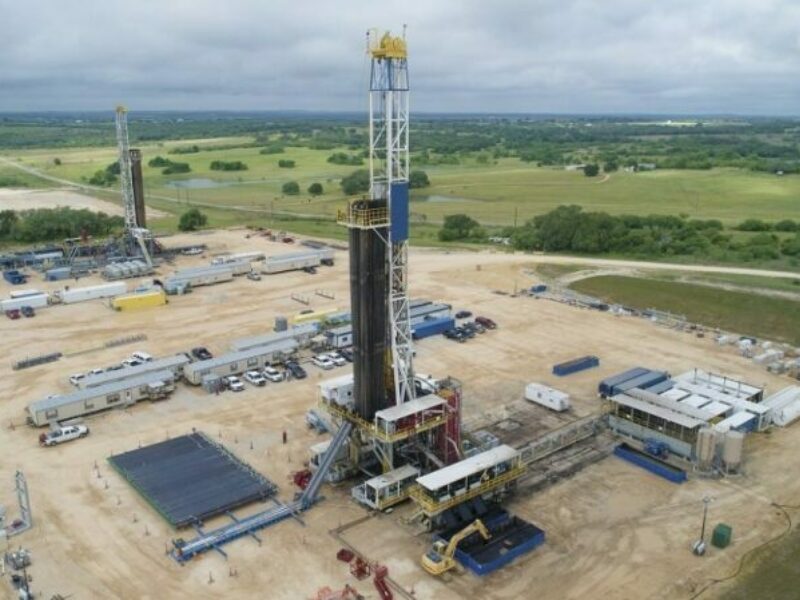WILDCAT WELLS: A WEST TEXAS TALE
Change is inevitable. In West Texas, a region with a long history of energy production and home to the most productive oil field in the U.S., invisible subsurface changes have led to drastic impacts on the land and water.
Ranchers in West Texas know these changes all too well, with their livelihood’s dependent on the vitality of the land, they have been the most profoundly affected by this contamination.
Despite efforts to determine ownership for problematic unplugged wells, records of early drilling activity are sparse or nonexistent. Wildcat wells drilled in the area in the 40s and 50s, are a relic of a time before modern regulations and documentation. Adding to the problem, of those that are documented, many were re-labelled as water wells when production declined. As these long-forgotten wellbores degrade, brine, methane, radioactive isotopes, and other harmful chemicals escape into groundwater, the surface, and the atmosphere. Land contaminated by these substances is rendered unusable and aquifers, vital to life in West Texas, risk contamination.
THE DEAD SEA OF WEST TEXAS: BLOWOUTS & BRINE
In Crane County, an abandoned wildcat well has produced West Texas’s newest lake. Lake Boehmer as the locals call it. It is the result of a blowout that spews salt water and hydrogen sulfide at over 200 gallons/minute and has grown to over 60 acres in size since 2003. Despite boasting water 3 times saltier than the ocean and sulfate levels 25 times the legal limit for drinking water, the well remains unplugged and the lake continues to grow. The problem at Lake Boehmer is a perfect example of the problem the nation faces in dealing with these legacy wells. Legal records show over 40 absentee owners associated with the well, with no clear responsible party identifiable. Further complicating the situation is the fact the well was converted to a water well in the 50s, placing it outside the jurisdiction of the Railroad Commission of Texas (RRC), which handles plugging orphaned wells when an owner cannot be located.
The cause of these blowouts is up for debate, but some locals and well control experts believe excessive re-injection of fluids from unconventional drilling operators in the Permian basin has shifted geologic formations, causing earthquakes, disrupting old wells, and forcing pollutants into aquifers.
PRODUCTION VS POLLUTION: ENERGY & THE ENVIRONMENT
Protecting groundwater supplies is critical to maintaining livelihoods and even habitation in much of the arid, rugged West Texas region. The Ogallala aquifer along the New Mexico border is becoming depleted, and supply of freshwater throughout the area is at risk.
Locating, classifying, and mitigating these abandoned, ready-to-blow wells is nobody’s, somebody’s, and everybody’s responsibility. No one person or company owns these lost wells, but the cumulative damage is growing. Sealing these legacy wells permanently is the first step in preventing further environmental damage. Despite the potential of renewable energy, oil and gas will continue to be the primary source of energy for years to come and thus this problem must be addressed.
Some Permian basin operators have ceased pulling freshwater from aquifers and are using nonpotable and recycled water for drilling operations. New regulations barring the use of water disposal wells in the region should reduce the likelihood of future blowouts but allowing injection into shallower formations presents an increased risk of aquifer contamination. Additionally, funding from the REGROW Act arms states with more resources to address problematic wells. This is a start.
It is past time to step up, accountability and action are needed now. Cleaning up the existing backlog of unsealed wells and ensuring responsible ownership of wells moving forward is among the most critical environmental issues we face. Retiring wells in a timely manner and preventing loss of well integrity could result in billions of dollars in savings and mitigation of millions of tons of harmful emissions. Inaction is a decision, one that will only lead to worse outcomes and fail to correct, protect, or preserve the health of our land and water.
While the road ahead won’t be easy, it never has been for the U.S. oil and gas industry, which has repeatedly revolutionized the energy landscape. Innovation is already abound, with new technology for emissions detection and mitigation advancing every day. One such technology, BioSqueeze®, offers a permanent solution that seals leakage pathways to prevent fugitive emissions and aquifer contamination. Better yet, unlike traditional remediation technologies composed of toxic chemicals, BioSqueeze harnesses the natural process of biomineralization to deliver a green solution that is safe for any scenario.
Change is inevitable. Let’s change the present to make better future.


